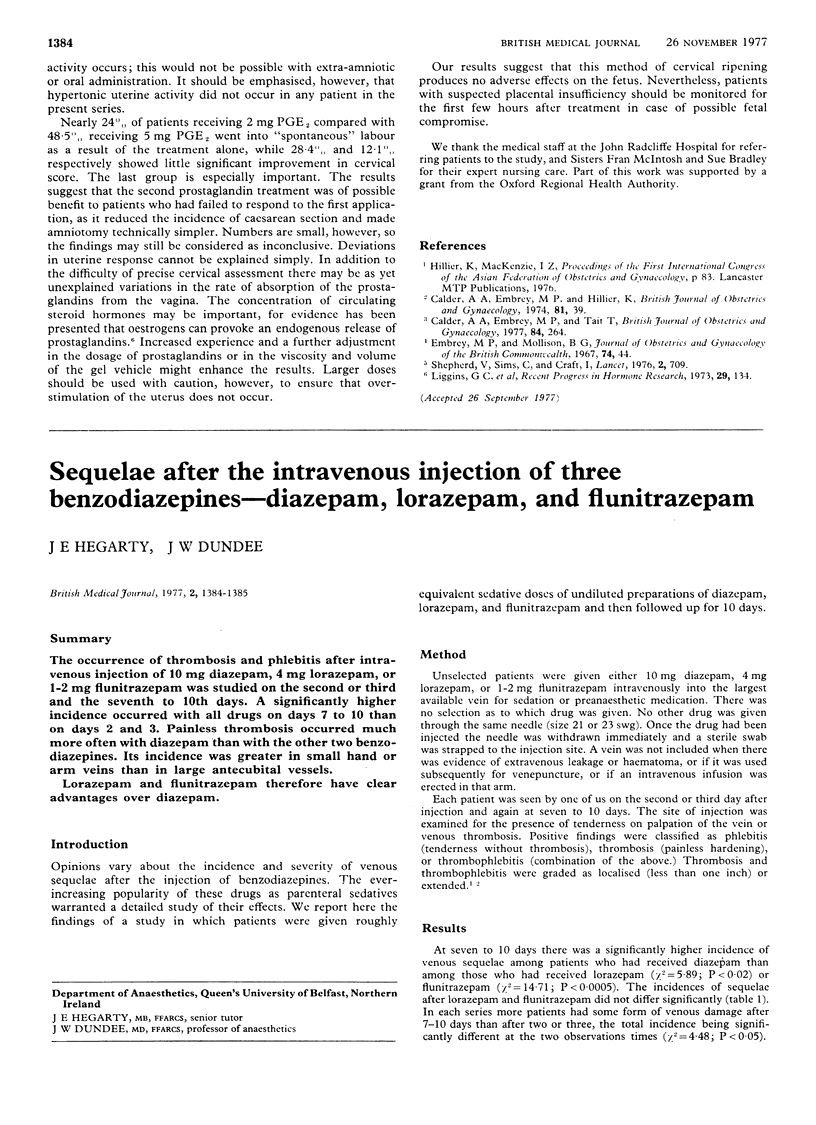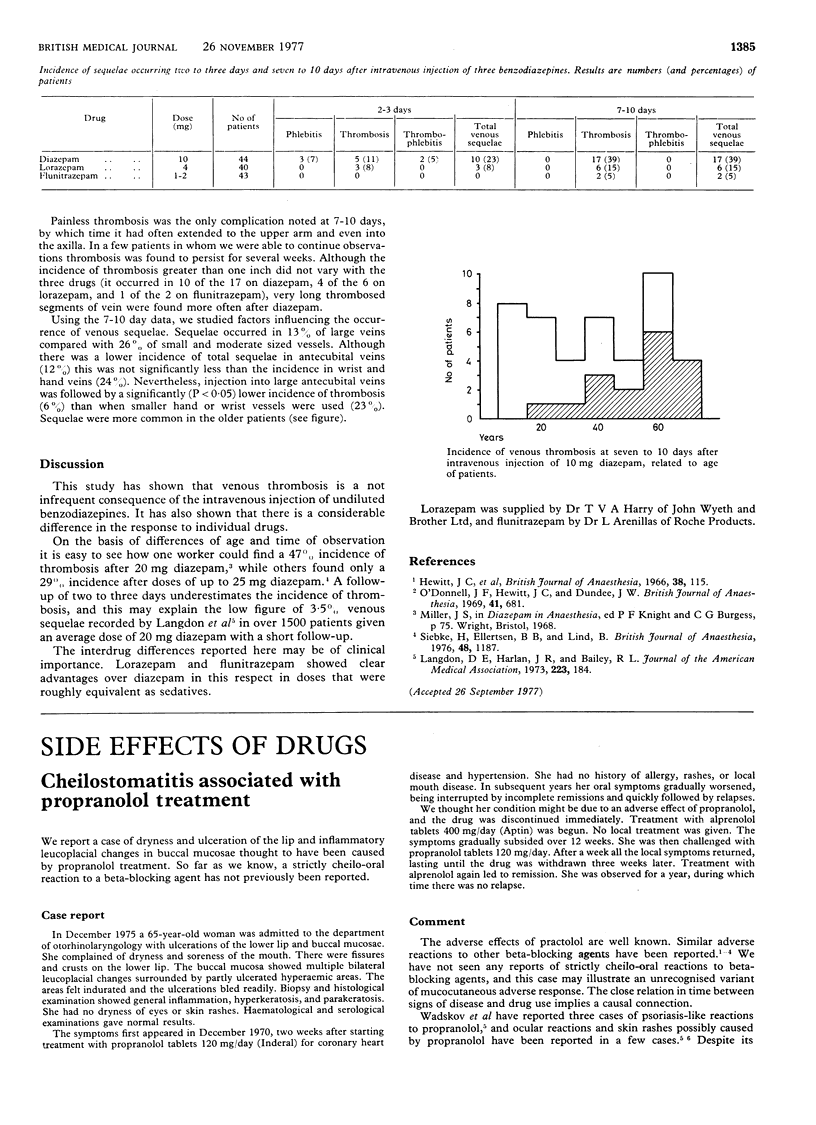Abstract
The occurrence of thrombosis and phlebitis after intravenous injection of 10 mg diazepam, 4 mg lorazepam, or 1-2 mg flunitrazepam was studied on the second or third and the seventh to 10th days. A significantly higher incidence occurred with all drugs on days 7 to 10 than on days 2 and 3. Painless thrombosis occurred much more often with diazepam than with the other two benzodiazepines. Its incidence was greater in small hand or arm veins than in large antecubital vessels. Lorazepam and flunitrazepam therefore have clear advantages over diazepam.
Full text
PDF

Selected References
These references are in PubMed. This may not be the complete list of references from this article.
- Langdon D. E., Harlan J. R., Bailey R. L. Thrombophlebitis with diazepam used intravenously. JAMA. 1973 Jan 8;223(2):184–185. [PubMed] [Google Scholar]
- O'Donnell J. F., Hewitt J. C., Dundee J. W. Clinical studies on induction agents. 28. A further comparison of venous complications following thiopentone, methohexitone and propanidid. Br J Anaesth. 1969 Aug;41(8):681–683. doi: 10.1093/bja/41.8.681. [DOI] [PubMed] [Google Scholar]
- Siebke H., Ellertsen B. B., Lind B. Reactions to intravenous injections of diazepam. Br J Anaesth. 1976 Dec;48(12):1187–1189. doi: 10.1093/bja/48.12.1187. [DOI] [PubMed] [Google Scholar]


